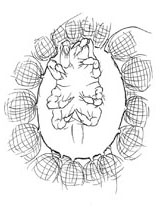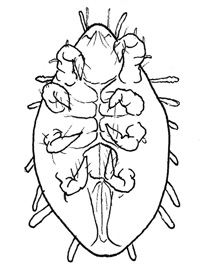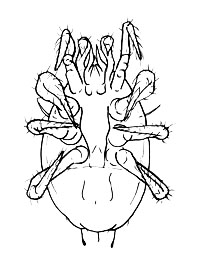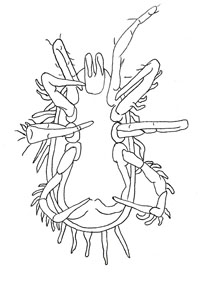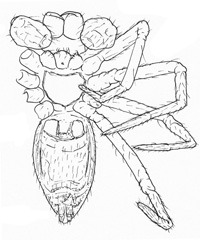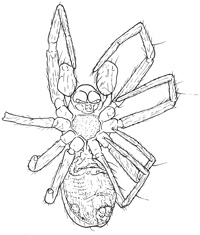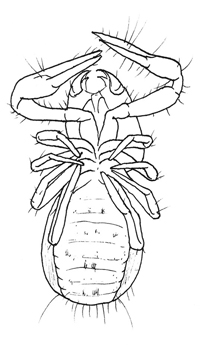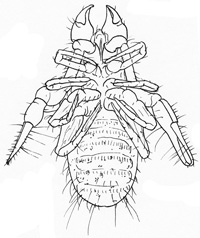This is a list of species organized by easily visually differentiated groups.
Species may occur more than once.
You can also view the list sorted by our lab code or by library.
To learn more about our lab codes, visit the code info page.
Mites with trichobothria (thick setae originating from cup-like pits antero-dorsally) and less pronounced palps than other mites. Adults are typically hard and dark with large anal and genital plates, whereas juveniles are pale and lack obvious plating.
Box
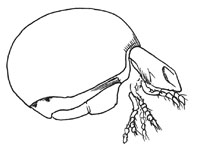
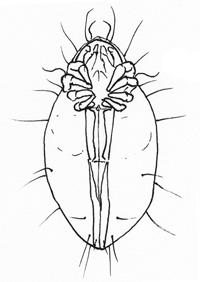
Oribatids with a ptychoid body form, which allows them to retract into a ball to protect their soft parts from predators. Includes mites from the families Euphthiracaridae, Phthiracaridae, and Mesoplophoridae; 3 species
Close Genital Plates
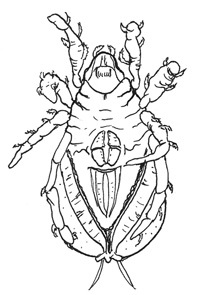
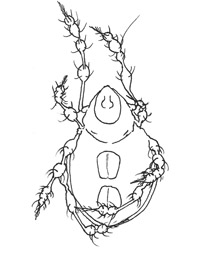
Oribatids with closely spaced genital plates. Typically hard and dark, although some softer, lighter forms are included if their genital plates are clearly defined. Includes mite from the "lower" oribatids and the non-poronotic Brachypilina; 29 species
Hard-Bodied
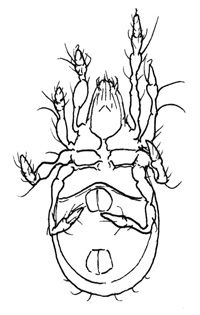
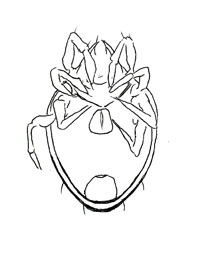
Hard-bodied, dark oribatids lacking obvious pteromorphs. Anal and genital plates are clearly defined with a noticeable space between them. This group includes non-poronotic and poronotic Brachypilina; 22 species
Winged
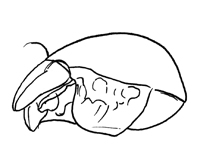
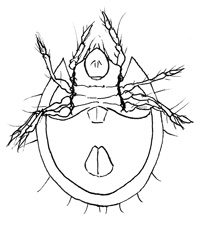
Hard-bodied, dark oribatids with pteromorphs (projections of the dorsal shield that protect the base of the legs). Anal and genital plates are clearly defined with a noticeable space between them. These mites are primarily adult poronotic Brachypilina; 30 species
Juveniles
Pale and translucent mites that are most likely juvenile oribatids.
Long Legs


Pale oribatid-like mites with very long legs. Includes several species in the Damaeidae; 7 species
Rectangular


Pale oribatid-like mites with a rectangular body shape. These mites also tend to have a waxy appearance; 7 species
Plicate


Pale oribatid-like mites with wrinkles on the exoskeleton. Consists of juvenile Brachypilina; 10 species
Round


Pale oribatid-like mites with a round body shape and few other obvious features for identification; 24 species
Elongate


Pale oribatid-like mites with an elongate body and few other obvious features for identification; 14 species
Mites with pronounced palps and long legs, with the front pair typically forward-facing. Most mites in this grouping are mesostimatids but large prostigmatid predators are also included in this category.
Adult Mesostigmatids
Mites typically greater than 500 µm in body length with distinct ventral and/or dorsal plating, an orange to pale yellow color, large linear palps, and the first pair of legs forward-facing.
Round
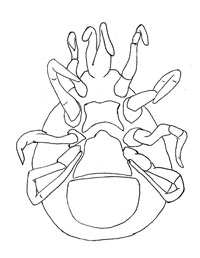
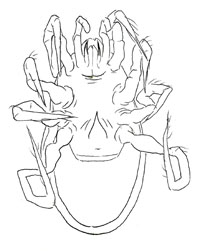
Adult mesostigmatids with a distinctly round body shape. Some may be flat in profile but others may be spherical in shape; 11 species
Elongate
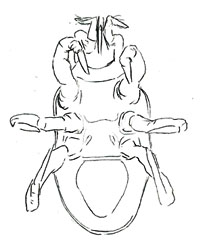

Adult mesostigmatids with an elongate body form. Some may have a tapered posterior and others may have a blunt posterior. This group consists primarily of Gamasine mesostigmatids; 22 species
Immature Mesostigmatids
Predatory mites that are pale in color with the first pair of legs forward-facing. Ventral and dorsal plating are indistinct and body size ranges form less than 300 to more than 500 µm.
Orange Chelicerae
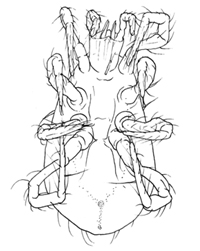

Immature mesostigmatids with a body length greater than 300 µm. Body color ranges from white to pale yellow but mouthparts are dark brown or orange; 20 species
Large Pale


Immature mesostigmatid mites with a body length greater than 300 µm. Body color ranges from white to pale yellow. Mouthparts are not noticeably colored; 19 species
Small Pale


Immature mesostigmatid mites smaller than 300 µm in body length and with 4 pairs of legs; 31 species
Juvenile


Pale predatory mites smaller than 300 µm in body length, with 3 pairs of legs and lacking distinct ventral and/or dorsal plating. This group is mostly juvenile Mesostigmata; 13 species
Prostigmatid Predators
Mites with a variety of shapes and colors. Most are quite large and opaque in their coloration, although many colors are possible.
Bdellidae


Prostigmatid predators recognizable by their large, elbowed palps terminating in long setae; 17 species
Cunaxidae


Mini mites with gnathosoma and palps coming to a point, long dorsal setae, and a diamond or truncated rhombus shaped body. This group generally consists of Cunaxidae; 6 species
Large Rhagidiidae


Prostigmatid predators with elongate bodies, sometimes narrowing to a "waist" in places, with long, striated legs. This group also contains some rhagidiid-like species; 9 species
Peculiar

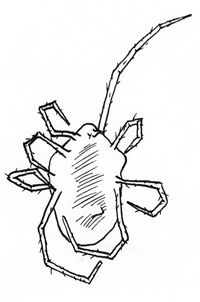
Predatory mites with distinct features or body forms that do not conform to the above categories. This group is primarily composed of prostigmatid mites but also includes some unusual mesostigmatid mites; 12 species
An artificial category of mites generally smaller than 300 µm in length, pale, and lacking obvious characteristics that would place them in other groups. This group contains primarily prostigmatid mites.
Eupodoidea
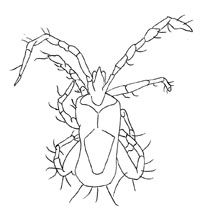
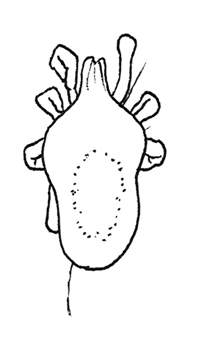
Small, pale mini mites with long legs and "love handles" between legs II and III. Consists mostly of mites in the superfamily Eupodoidea, including some small rhagidiids, and similar taxa; 32 species
Wide
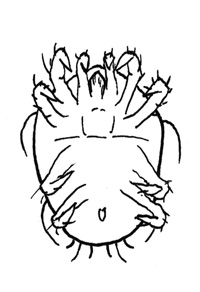
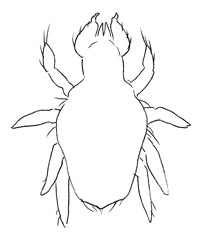
Mini mites with distinct palps and a wide body that may be circular or shield shaped, short legs and short gnathosoma. Includes representatives of the Tydeidae and Camerobiidae; 15 species
Nanorchestidae
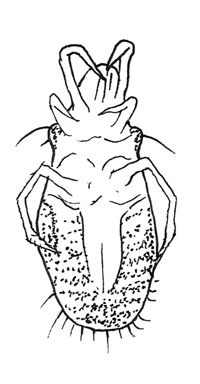
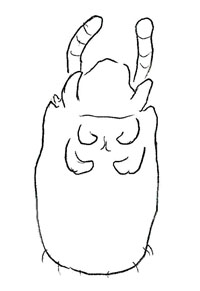
Globose or elongate mites with legs concentrated at the anterior end of the body. Includes endeostigmatid mites and similar taxa; 10 species
Cyst-Like
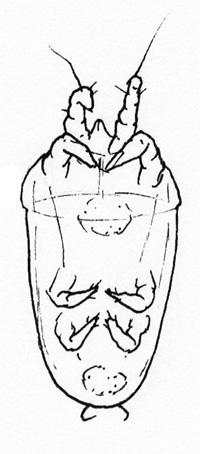
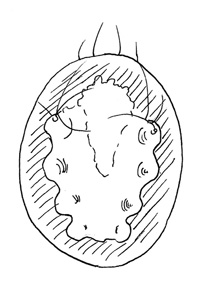
Mini mites with minute, poorly developped legs and a flat body. Includes dispersal life stages of prostigmatid and astigmatid mites; 10 species
Brachychtoniidae
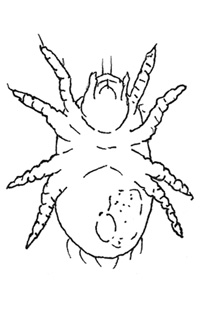
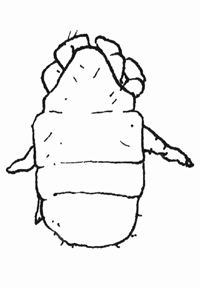
Soft bodied oribatid-like mites with a divided dorsal shield and unsclerotized genital and anal plates that are subequal in size. This grouping also includes enarthronote and juvenile oribatida, endeostigmata and prostigmata that are similar in appearance; 13 species
Larval
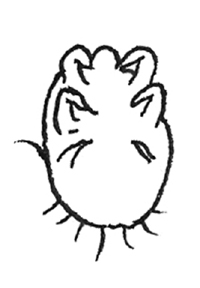
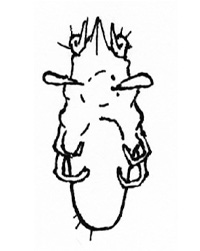
Very small mites, typically 100-200 um in size, with very small legs and few distinguishing features. Includes larval and juvenile mites; 17 species
Six-legged arthropods with a furcula (springtail). Body form may be linear with distinct segmentation or globular.
Equal Segments
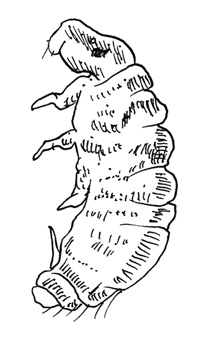
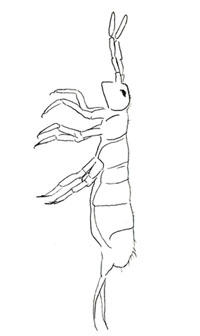
Collembola with a linear body plan and abdominal segments that are similar in size. Includes mostly non-entomobryid Arthropleona; 25 species
Large Abdominal Segment
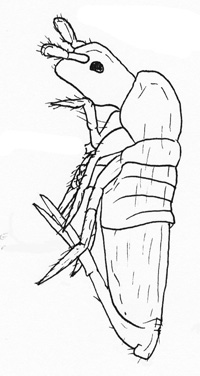
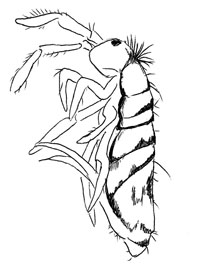
Collembola with a linear body plan and one abdominal segment that is clearly larger than the others. Some may be shiny, with scales that may obscure the segmentation. This group is primarily composed of Entomobryidae; 34 species
Colourful Globular
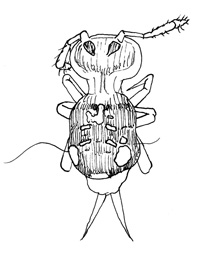
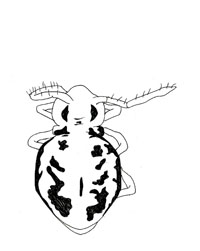
Collembola with a globular body plan, eyes, and pigmentation that may be a single color or patterned. This group is primarily composed of Symphypleona; 17 species
Pale Globular
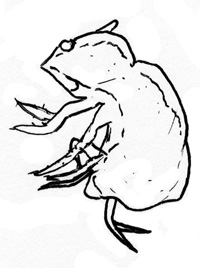
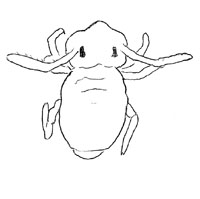
Collembola with a globular body plan and a pale or translucent color. Some lack eyes and have reduced antennae and furcula. This group is primarily composed of Symphypleona and Neelipleona; 14 species
Spiders
Arachnids with two distinct segments, the cephalothorax and the abdomen, belonging to the order Araneae.
Female Spiders
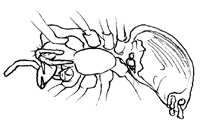
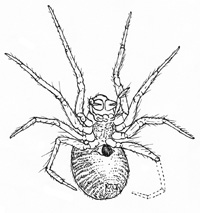
Adult spiders with an obviously sclerotized epigynum on the ventral abdomen; 7 species
Juvenile Spiders
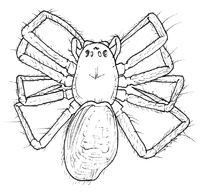
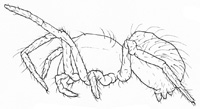
Immature spiders without obvious sclerotization of the exoskeleton or other sex characteristics; 35 species
Harvestmen
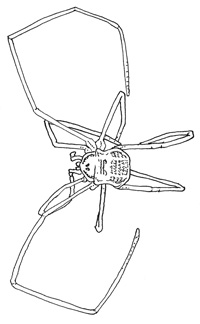
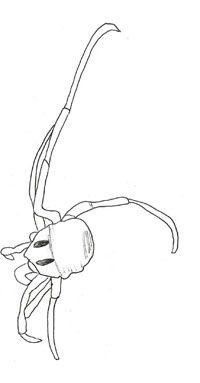
Arachnids with very long legs and an oval-shaped body consisting of two indistinct segments (the cephalothorax and abdomen). These arachnids are commonly called Daddy Long Legs and belong to the order Opiliones; 2 species
Arthropods that are not included in the categories above. Primarily consists of insects but myriapods and crustaceans are also included.
Insects
Arthropods with 6 legs and antennae that are not collembola, including flies, wasps and thrips. Insect larvae and pupae are also included in this category.
Thrips

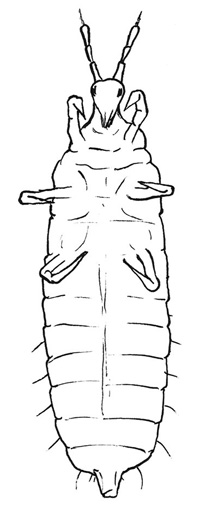
Flat and narrow-bodied insects with reduced mandibles and thin feathered wings, when present. Includes members of the Thysanoptera; 6 species
Booklice


Insects with a large head and eyes, mandibles and rod-like maxilla, wings may or may not be present. Includes members of the Psocoptera and similar species; 8 species
True Bugs


Insects with a prominent proboscis (sucking mouthparts) and partial or fully membranous wings, when present. Includes aphids and other members of the Hemiptera; 21 species
Beetles


Dark-coloured insects with a modified pair of wings forming a hard covering over an inner, membranous pair. Includes members of the Coleoptera; 16 species
Flies


Insects with one pair of wings and a pair of halteres (reduced wings that look like balls on a stick). Includes members of the Diptera; 7 species
Wasps and Ants


Insects with developed mandibles, two pairs of membranous wings (when present), and tapering in the body that makes the segments very pronounced. Includes members of the Hymenoptera; 8 species
Larvae and Pupae


Segmented, worm-like specimens, often have 6 legs, setae on the body and posterior projecting structures. Includes representatives of the Coleoptera, Diptera and Lepidoptera, among others; 25 species
Lots of Legs
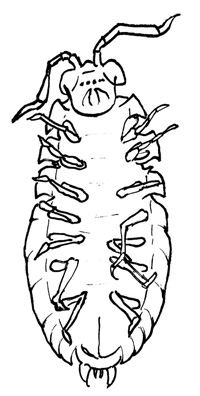
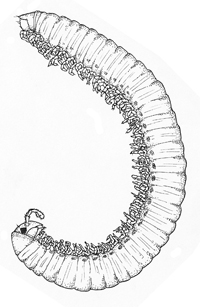
Specimens with more than four pairs of legs. Includes myriapods (centipedes and millipedes) and crustaceans (wood bugs); 10 species
